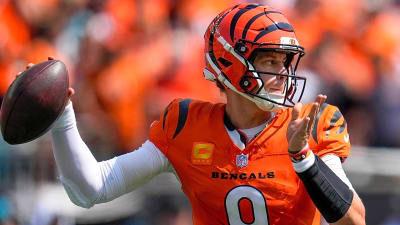The business of measuring big waves is sorta like the hunt for Big Foot. Both are ephemeral in nature, meaning only those who were there to witness these mythical beasts have a firsthand account, however bogus and conflated these reports may be. Both rely on video or photographic evidence, which is subject to a number of variabilities including angle, perspective, et cetera. And both tend to be somewhat subjective – e.g., was that a brown bear through a blurry lens, or an actual sasquatch? Was that wave really 108-feet tall, or was it more like 65 and some change?
Despite numerous attempts, the democratization of measuring wave heights still remains an elusive aspect of big wave surfing. However, with the use of modern technology, the esoteric practice is inching closer to objectivity. (As for confirming the existence of Big Foot, there’s a ways to go.)
Specifically, drones have been instrumental in creating an impartial, accurate view at wave size. Last year, during an historic swell at Nazaré, Portugal, German surfer Sebastian Steudtner allegedly broke his own Guinness World Record for “largest wave surfed” (also at Nazaré from 2020, measuring 86-feet) with an alleged 93.73-footer, as deemed by automaker Porsche and their state-of-the-art drone technology. And just recently before Christmas, another new potential world record wave went down at Maverick’s, CA; estimates for Alo Slebir’s bomb came in at 108-feet.
And yet, no definitive answer as to who is the new title-holder.
So, amidst all this world record discussion, a note landed in our inboxes. It was from Teddy Allen, a Barbados-based scientist who’s been working on a wave-measuring technology, backed by drones, with an eye towards total objectivity. We chatted with Allen about his operation; see below.
Hey Teddy, what’s up? Tell us a little bit about your background.
I’m a meteorologist, a climate scientist if you wanna get technical. I study extreme events in different regions – heat waves, floods, etc. But I also have a background in marine meteorology and wave forecasting. In grad school, I had a couple professors show me what was possible with drone technology. I always thought, ‘drones are nerdy. They’re like a video game. I want nothing to do with that.’ Then I started realizing the capabilities that come with the sensor technology.
Fast-forwarding to 2020, and there was that debate surrounding Maya Gabeira and Justine Dupont’s entries in the XXL Big Wave Awards. That’s when the idea for Henet started?
So, I read that article, and I was just shocked. Like…this debate is still going on? And now I knew that we had sensor technology to measure water levels. Can we put that on a drone, and use that to measure the wave height? Think about a sensor when you’re backing up your car. You know, the beep, beep, beep. It’s measuring what’s behind you. As the distance between you and the wave gets taller or smaller, we can measure that using drones and sensors.
Then, I was watching 100 Foot Wave on HBO, while I came down with a bad case of COVID. I think it was in the second episode that Cotty [Andrew Cotton] talks about the issue of measuring waves. I paused the TV, found his email, and shot him a note. The next day I got an email back saying he was interested. Since then, Cotty has worked really closely with the project. He’s not motivated by money or what’s in it for him. He just wants answers. He doesn’t care if it’s his wave or someone else’s. He just wants real numbers associated with giant waves.
What’s wrong with the existing way of measuring big waves?
What’s being done now is essentially geometry. It’s estimating wave height by perspective, photogrammetry, angles, and this and that. But you can have two different pictures of the same wave, and you’ll get two different answers. Take that Nazaré wave from Mason Barnes; from the side, yeah, it looks like it’s 100 feet. But from straight-on, it’s something else. I’m not bagging on him, but that’s just one example.
The general consensus is that the powers that be want the ultimate authority in deciding who gets the record-breaking wave. That could come down to sponsors, or if your team isn’t friendly with the organization, then you’re less likely. The other thing that gets me is that there’s no margin of error. Take Laura Enever’s wave. They announce that Laura rode a 43-foot [43 .6-foot] wave, and she beat the previous record by 1.4 feet. So, what’s your margin of error? I’m sure it’s more than 1.4 feet.
There’s so many surrounding factors in the big-wave debate – actually completing the wave, versus simply making the drop; where the wave starts, and where it ends – what’s your take on all that?
I try and stay completely agnostic with the entire process. All I try and do is measure the wave height. It doesn’t matter what position the surfer is in; I’m just trying to tell you how big the wave is from crest to trough. If someone else wants to debate where that surfer is in relation to the wave height, they’re more than welcome to it. [Laughs.]
Despite all the advancements in technology, do you think surfers will ever be in full agreement on wave heights? Or are we doomed to debate for eternity?
There’s always going to be that machismo in surfing. Despite the definition of wave height being the measurement from crest to trough. It has nothing to do with the back of the wave, it has nothing to do with half the wave. So, for whatever reason, that machismo fuels people to call a legit 12-foot wave 3-to-4-foot. Don’t get me wrong; I have complete respect for Hawaiian surfing. But it’s just objectively wrong. You have guys like Laird Hamilton, who doesn’t even want you to tell him how big a wave is. He’s, like, spiritual about it. In his mind, he’s surfed 100-foot, 120-foot waves out at Jaws. Then, you have guys like Kai Lenny, who, from a scientific standpoint, they’re really interested in knowing the exact wave height. Everyone’s different.
More must-reads:
- Shedeur Sanders gets honest about narrative that Kevin Stefanski is 'sabotaging' him
- Angels reportedly set to be rid of MLB's worst contract
- The 'Three-TD, Three-INT NFL games' quiz
Breaking News
Trending News
Customize Your Newsletter
 +
+
Get the latest news and rumors, customized to your favorite sports and teams. Emailed daily. Always free!








